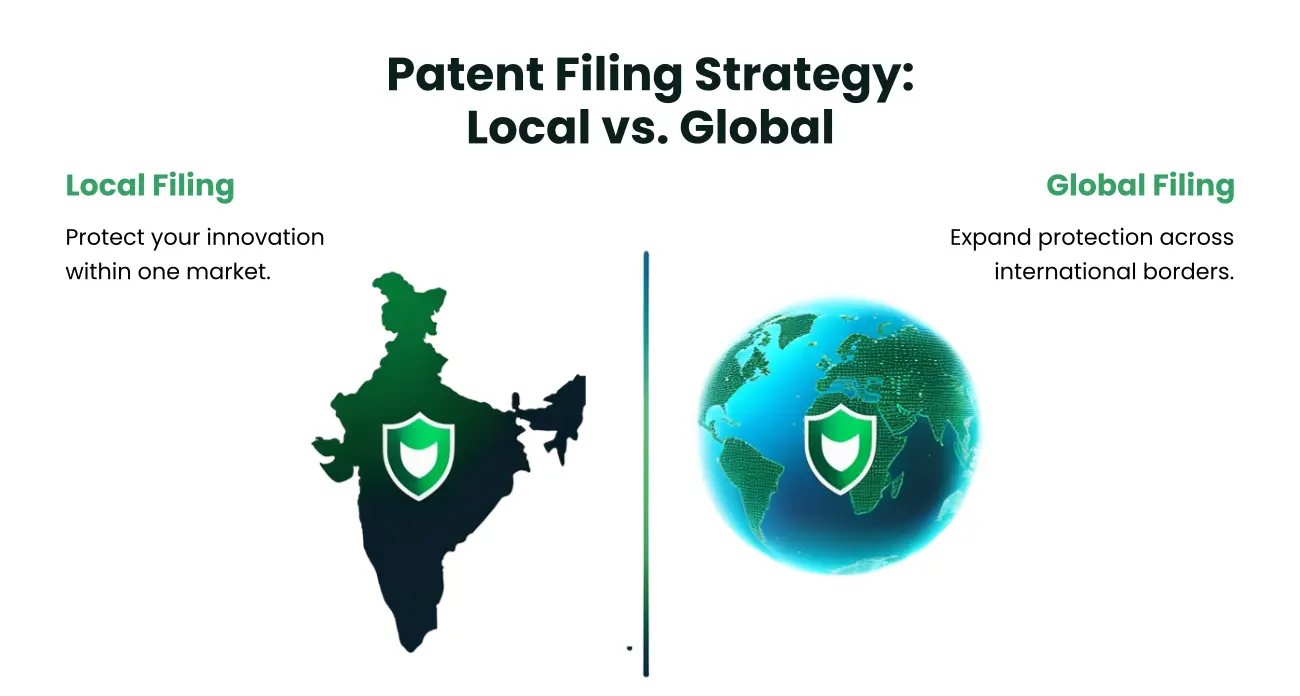
ENOVO on 10 Jul, 2025
Common Mistakes to Avoid During Trademark Registration
Securing a trademark is essential for safeguarding a company’s brand identity, intellectual assets, and overall market reputation. Whether you're a startup or an established enterprise, registering your trademark secures your brand's name, logo, slogan, or other identifiers from unauthorized use. However, the registration process is often more complex than it appears, and many applicants unintentionally make errors that can result in rejection, delays, or even legal disputes. To prevent these issues, it’s essential to be aware of the most common trademark registration mistakes and how to avoid them. This comprehensive guide walks you through these pitfalls, empowering you to safeguard your brand with confidence and precision.
Choosing a Weak or Generic Trademark
One of the earliest and most critical mistakes businesses make is choosing a weak, generic, or descriptive trademark. A strong trademark must be distinctive and capable of clearly identifying the source of a product or service. Generic names like "Best Computers" or "Fresh Juice" simply describe the product and offer no unique identity. Similarly, terms that are overly descriptive may fail to distinguish your brand from others in the same industry. This often leads to rejection during the application process. A truly effective trademark is either invented, suggestive, or arbitrary. For instance, names like "Zomato" or "Spotify" are unique and memorable, creating a clear identity without describing the product directly. Choosing a strong name from the start ensures your brand can be protected and legally defended.
Skipping the Trademark Search
A major oversight many businesses make is skipping a thorough trademark search prior to submitting their application. Many applicants assume their chosen name or logo is unique simply because they haven’t seen it locally or online. However, trademark conflicts often arise when a similar or identical mark is already registered by another entity. A thorough trademark search, using national and international databases, helps you identify any potential conflicts that might lead to rejection or opposition. This not only saves time and legal costs but also ensures that you're not infringing on someone else's rights. Performing due diligence through a trademark search is a non-negotiable step in the registration journey.
Selecting the Wrong Trademark Class
Trademarks are categorized into classes based on the nature of goods or services, as per the Nice Classification system. Selecting the wrong class is a common oversight that can render your registration ineffective. For example, if you’re launching a skincare product and mistakenly register under the clothing class, your trademark won't be protected in the relevant industry. Each class defines a separate category of goods or services, and if your trademark is not registered in the correct class, it cannot be legally enforced. In some cases, your business may fall under more than one class, and it’s crucial to identify all applicable categories. Seeking professional advice ensures your trademark covers the full scope of your offerings.
Using an Already Registered or Similar Mark
Many applicants unknowingly apply for trademarks that are too similar to existing ones. Even if the spelling differs slightly, if the pronunciation or meaning is the same or confusingly similar, it can be grounds for rejection. Trademark authorities assess the likelihood of confusion among consumers. A name that closely resembles another—especially in the same class—can mislead the public and infringe on the existing rights of the registered trademark owner. Such oversights frequently result in legal challenges or formal objections. To avoid this, it’s crucial to evaluate existing trademarks for similarities in sound, appearance, and meaning. A brand name should not only be unique but also clearly distinguishable in the marketplace.
Delaying the Filing Process
Timing plays a critical role in trademark protection. Some entrepreneurs wait too long before registering their trademark, believing they can apply once their business grows or gains visibility. This delay can be costly. Trademarks are granted on a “first to file” basis in many countries, including India. This means that someone else could register your brand name before you, even if you’ve been using it. Once another party secures the trademark, reclaiming your rights can be expensive and legally complicated. It's advisable to file your application as soon as you finalize your brand name, logo, or slogan, particularly if you intend to build a long-term business presence.
Filing Incomplete or Inaccurate Applications
Another frequent mistake is submitting trademark applications with incorrect or incomplete information. This includes errors in the applicant’s name, business structure, product description, or address. Even small errors can cause processing delays or result in the application being denied. For example, listing the wrong ownership entity—such as using your personal name when it should be your company’s—can affect legal enforceability. Furthermore, vague product descriptions may not provide the protection your business needs. It’s important to be precise and consistent with all information, ensuring it aligns with your legal documents and business records. This helps establish a clear legal trail and reduces the risk of complications in the future.
Misusing the Trademark Symbol
Many applicants start using the ® symbol before the trademark is officially registered, which is legally incorrect in most jurisdictions. The ® symbol can only be used once the registration is formally granted by the trademark office. Until then, the ™ symbol may be used to indicate that you claim rights to the mark. Using symbols incorrectly can mislead consumers and create legal challenges. Moreover, failing to use the trademark consistently and correctly across all platforms—such as your website, packaging, and marketing materials—can weaken your legal standing in case of disputes. It's essential to understand and apply the proper usage guidelines for your trademark symbols.
Overlooking Post-Registration Responsibilities
Trademark registration initiates an ongoing commitment to securing and managing your brand’s identity over time. Ongoing vigilance is required to ensure your rights remain enforced and uncompromised. A major mistake businesses make is failing to monitor the market for potential infringements. Without regular surveillance, copycats may begin using confusingly similar marks, diluting your brand’s strength. It’s your responsibility to take enforcement action when necessary, whether through cease-and-desist letters, opposition filings, or legal proceedings. Additionally, trademarks must be renewed periodically. Neglecting timely renewal of your trademark may result in forfeiting your legal protection and ownership. To avoid these issues, businesses should establish internal processes or work with IP professionals to track renewals and monitor potential infringements.
Filing Without Legal Guidance
Many businesses attempt to handle trademark registration themselves, especially with the availability of online filing platforms. While it’s possible to file without legal help, the process involves complex legal nuances that are easy to overlook. Errors in class selection, improper wording of product descriptions, or overlooking conflicting marks can all result in costly setbacks. Working with a qualified trademark attorney or IP consultant ensures your application is accurately prepared, legally sound, and aligned with your long-term business goals. The upfront cost of professional guidance is often far less than the expense of fixing errors or defending against legal claims.
Ignoring International Trademark Protection
In today’s global business environment, many brands operate across borders or plan to expand internationally. A common oversight is assuming that a domestic trademark provides global protection. In reality, trademarks are territorial, meaning they must be registered separately in each country or region where protection is sought. Businesses that neglect this may find their brand name already registered in international markets, forcing them to rebrand or engage in lengthy legal battles. Using tools like the Madrid Protocol allows for international trademark applications through a single process. Planning for international protection early ensures your brand is secure as your business grows.
Assuming Business or Domain Registration is Sufficient
A common misconception in brand protection is assuming that securing a business or domain name also provides legal trademark ownership, which it does not. While business registration gives you the legal ability to operate under a certain name, it does not prevent others from using a similar name for competing products or services. Similarly, owning a domain name doesn’t stop someone else from registering the same name as a trademark. The only way to secure exclusive brand rights is through formal trademark registration. Understanding this difference is crucial for businesses aiming to safeguard their brand value and steer clear of legal issues.
Trademark registration is not just a legal formality—it is a strategic step that reinforces your brand identity and provides a legal foundation for long-term business success. However, many applicants unknowingly make critical mistakes that can hinder the process or undermine the protection they seek. From choosing a weak name and skipping trademark searches to incorrect class selection and post-registration negligence, these missteps can be costly and time-consuming. By understanding and avoiding these common errors, businesses can navigate the trademark system more confidently and secure the exclusive rights they need to grow and thrive.
Whether you're launching a new brand, expanding your product line, or entering international markets, a well-planned trademark strategy—and professional guidance—can make all the difference. Don’t wait for problems to arise. Protect your brand from day one by registering your trademark properly, completely, and proactively.
Enovo offers expert Trademark Registration, IP Protection, Copyright & Patent Services in Pune to safeguard your intellectual property rights globally.











